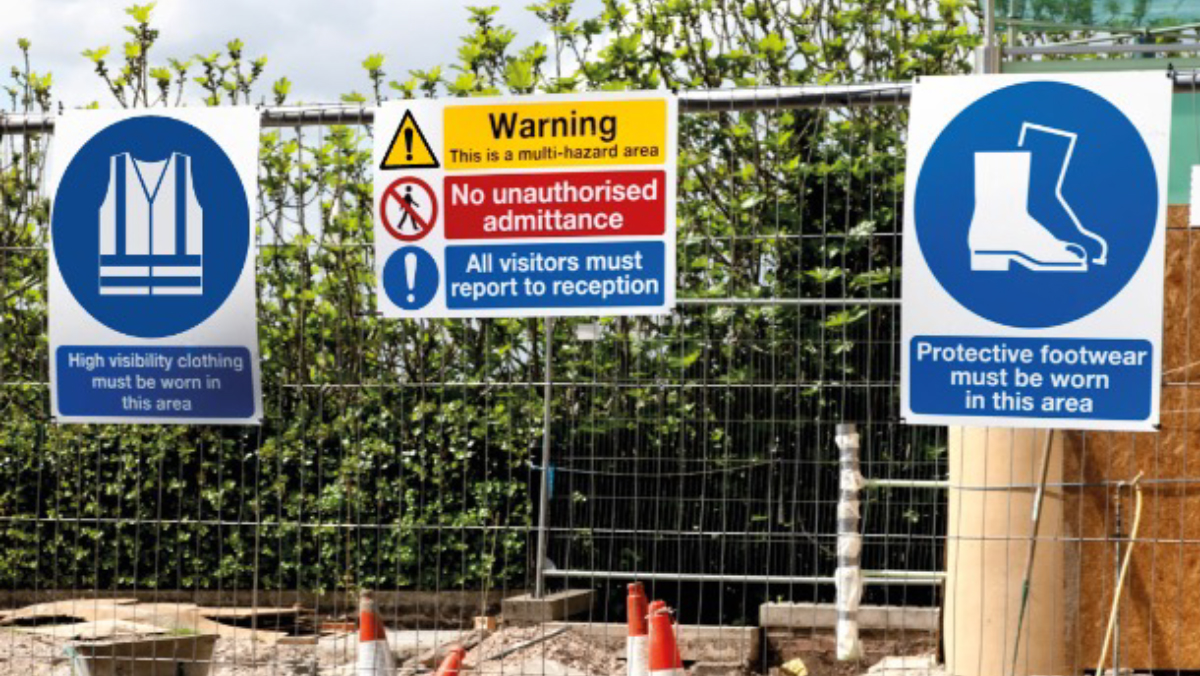Understanding Safety Signs
Jan 24 2024 1:18PM

Did you know that workplaces with clear and visible safety signage experience an average of a 28% reduction in workplace accidents? Implementing effective safety signage not only enhances awareness but significantly contributes to creating a safer work environment, reducing the risk of incidents and promoting a culture of well-being among employees.
At Knights Corporate Workwear, we believe that a safe workplace is not just a legal obligation but a responsibility that fosters a thriving and productive environment.
As we prioritize your professional well-being, we want to emphasize the crucial role workplace safety plays in the success of any organization.
We get asked a lot “What are the different types of safety signs and their meanings?”, so we have answered this question for you below.
Understanding Safety Signs: Enhancing Workplace Safety
In any workplace, safety is paramount, and the use of safety signs plays a pivotal role in maintaining a secure environment for employees and visitors alike. Safety signs are not just visual elements; they are crucial communicators of information that can prevent accidents, injuries, and potential hazards. Let's delve into the various types of safety signs and unravel the meanings they convey.
1. Mandatory Signs:
These signs are characterized by a blue circle and white pictogram, indicating actions that must be taken. From wearing personal protective equipment (PPE) to specific operational procedures, mandatory signs convey obligations that ensure both individual and collective safety.
2. Prohibition Signs:
Recognizable by their red circle with a diagonal line across a black pictogram, prohibition signs indicate actions or behaviours that are strictly forbidden. These signs are critical in preventing accidents by clearly stating what actions should be avoided.
3. Warning Signs:
Often triangular with a yellow background, warning signs alert individuals to potential hazards or dangers. Whether it's the presence of hazardous materials, high voltage areas, or slippery surfaces, these signs serve as early warnings to encourage caution.
4. Emergency Exit Signs:
Crucial for swift evacuation during emergencies, these signs feature a green background with a white pictogram showing the way to exits. They guide individuals to safety and are instrumental in emergency preparedness.
5. Fire Safety Signs:
In case of fire or other emergencies, fire safety signs are essential. These signs, typically red and white, indicate the location of firefighting equipment, emergency exits, and assembly points.
Importance of Safety Signage in the Workplace:
The significance of safety signage in the workplace cannot be overstated. These visual cues serve as constant reminders of potential hazards, safety protocols, and emergency procedures. Here are a few reasons why safety signage is crucial:
1. Risk Reduction:
Safety signs contribute to risk reduction by alerting individuals to potential dangers. Whether it's a construction site or an office floor, these signs prompt individuals to take necessary precautions, mitigating the risk of accidents.
2. Legal Compliance:
Adhering to safety signage requirements is not just good practice; it's a legal obligation. Many occupational safety regulations mandate the use of specific signs to ensure compliance with safety standards.
3. Enhanced Communication:
Safety signs provide a universal means of communication. In environments where multiple languages may be spoken, visual symbols bridge language barriers, ensuring
